#maria villafranca
Explore tagged Tumblr posts
Text

Grand Duke Leopold II of Tuscany (1797-1870)
Artist: Ferdinand Georg Waldmüller (Austrian, 1793-1865)
Date: 1833
Medium: Oil on canvas
Collection: Kunsthistorisches Museum Vienna, Austria
Leopold II, Grand Duke of Tuscany
Leopold II[nb 1] (3 October 1797 – 29 January 1870) was Grand Duke of Tuscany from 1824 to 1859. He married twice; first to Maria Anna of Saxony, and after her death in 1832, to Maria Antonia of the Two-Sicilies. By the latter, he begat his eventual successor, Ferdinand. Leopold was recognised contemporarily as a liberal monarch, authorising the Tuscan Constitution of 1848, and allowing a degree of press freedom.
The Grand Duke was deposed briefly by a provisional government in 1849, only to be restored the same year with the assistance of Austrian troops, who occupied the state until 1855. Leopold attempted a policy of neutrality with regard to the Second Italian War of Independence but was expelled by a bloodless coup on 27 April 1859, just before the beginning of the war. The Grand Ducal family left for Bologna, papal territory since the Congress of Vienna.
Tuscany was occupied by soldiers of Victor Emmanuel II of Sardinia for the duration of the conflict. The Armistice of Villafranca, agreed to between Napoleon III of France and Franz Joseph I of Austria on 11 July, provided for the return of the Lorraines to Florence, but Leopold himself was considered too unpopular to be accepted, and on 21 July 1859, he abdicated the throne in favour of his son, Ferdinand. Ferdinand was not, however, any more acceptable to the revolutionaries in control of Florence, and his accession was not proclaimed. Instead, the provisional government proclaimed the deposition of the House of Habsburg (16 August).
#portrait#painting#oil on canvas#man#standing#full length#armour#leopold ii of tuscany#italian culture#velvet cape#royal crown#table#sword#helmet#velvet#italian history#grand duke leopold ii#ferdinand georg waldmüller#austrian painter#fine art#19th century painting#european art#artwork
28 notes
·
View notes
Text
22/05 Étape 48 Camponaraya - Ambasmestas
Départ à 6h15 pour cette étape avec 2 variantes à choisir . 32 km .
Températures enfin clémentes avec 8°, c'est le double d'hier, plus de gants et j'enlève le bas (du pantalon pour me retrouver en short).
JP et moi nous prenons le petit déj à Cacabelos ou juste après, au niveau de Piéros (km 8), nous prenons l'option de suivre la route sur environ 2 km, l'autre option nous en rajoute 2. Nous avons déjà une étape de 30km et plus loin un deuxième choix (vers le km 15) nous en rajoutera 2 également... Vous suivez? Les 2 plans illustrent le choix au km 15.
Nous traversons de beaux paysages, montagnes,vignes et nous avons la chance d'avoir encore une belle météo, non négligeable pour le moral.
Nous arrivons ensuite à Villafranca del Bierzo ou d'entrée un imposant château de Santa Maria se dresse devant nous, puis ses 6 églises réparties dans cette petite ville où , à l'heure où nous passons, ça ne se bouscule pas . A la sortie de la ville nous prenons l'option montagne (option km 15), plus longue et plus difficile mais plus belle que l'option vallée qui se cantonne a suivre la route et autoroute.
Les premiers pourcentages tournent autour des 24% (source JP, professionnel de la montagne) mais cela vaut le coup, 12 km de montée et descente en passant par Pradela ou nous irons déjeuner et goûter le gâteau de châtaignes car en passant j'ai remarqué une belle culture de châtaigner. Nous redescendons ensuite dans la vallée pour terminer notre journée sur Ambasmestas.
Belle journée de marche avec de la bonne fatigue qui nous insistera a faire une sieste réparatrice avant de déguster une bonne bière.
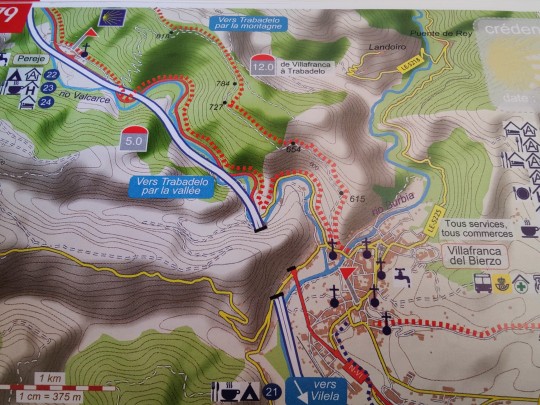
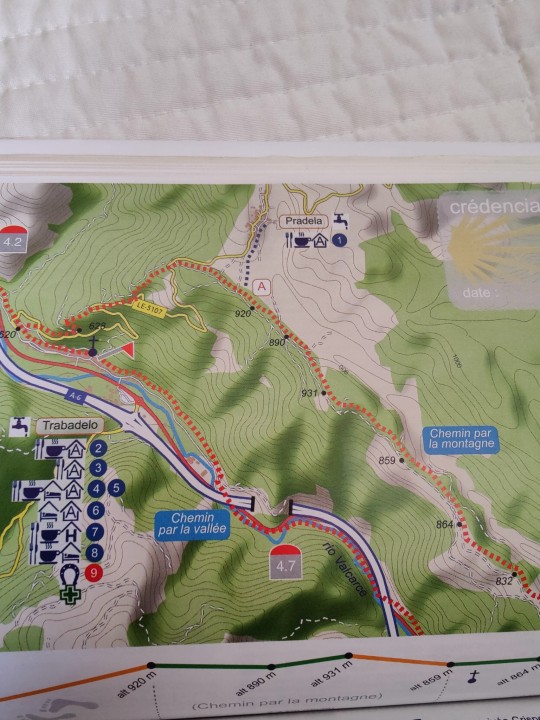
12 notes
·
View notes
Text




Through the Years → Felipe VI of Spain (3,256/∞) 12 June 2024 | King Felipe VI on his arrival at the inauguration of the exhibition 'Hospitalitas: La gracia del encuentro / A graza do encontrado', at the Church of Santiago and Collegiate Church of Santa Maria, in Villafranca del Bierzo, Leon, Castilla y Leon, Spain. Felipe VI inaugurates today the 17th edition of Las Edades del Hombre to be held this year 2024 in Villafranca del Bierzo (Leon) in the Church of Santiago and the Collegiate Church of Santa Maria, and in Santiago de Compostela in the crypt of the Portico de la Gloria in the cathedral and in the monastery of San Martin Pinario. (Photo By Photogenic/Claudia Alba/Europa Press via Getty Images)
#King Felipe VI#Spain#2024#Photogenic#Claudia Alba#Europa Press via Getty Images#through the years: Felipe
0 notes
Text
Estoy en CONIL de la FRONTERA [rebautizado por mi como COÑIL porque MUCHOS COÑOS de buen VER pero difícil PROBAR en Bares de COPAS ATESTADO de FUMATAS Y BORRACHAS con la MUSICA A TOPE ..pues me invito la RRPP DOMINICANA LADY amiga de una SEVILLANA con una AGENCIA DE MODELOS en mayo 2002 aprovechando que iba a correr la TUNE UP SEVILLE _NEW YORK MARATHON ganando un Dorsal que valen 600€ pero preferí correr la MARATON DEL PACIFICO DE MAZATLAN porque tanto vi un anuncio en una revista que me dieron en la 1/2 maratón del PARDO, porque iba a estar con la MEXICANA y porque NEW YORK ya lo conocia ..y LADY me presento a malogrado SERGIO LUYK y al atleta REYES ESTEVEZ en disco AVE NOX así como me llevo al CAFE DE LOS ARTISTAS bajo la antigua catarata de PLAZA DE COLON donde se puso NACHO CANO junto a mi que fue novio de la CRUZ o PENELOPE tras conocerla con 14 y 25 años en video LA FUERZA DEL DESTINO del cd DESCANSO DOMINICAL de MECANO y cuyo debut en solitario UN MUNDO SEPARADO POR EL MISMO DIOS tiene un video con fútbol de niños y JERUSALEN comprandeselo mi padre]..tras haber pasado junto a DOS HERMANAS [=fabrica de consoladores FLESH_LIGHT de un matrimonio Yankee con lo que se hace rico al distribuir para EUROPA], UTRERA [grupo LOS MUERTOS DE CRISTO, malogrado REYES, entrenador CAPARROS con el que me fotografie en Bar SAN ELOY en Sevilla y le salio LEUCEMIA haciendo debutar en Sevilla a Sergio RAMOS nacido en CAMAS y casado con pilar RUBIO que fue novia por 10 años del cantante de Hamlet=cd LA PUTA Y EL DIABLO, Malogrado PUERTA que murió con 22 años teniendo embarazada a su novia de 42 años que fue al funeral con camiseta de GSUS=JESUS y JESUS NAVAS nacido en LOS PALACIOS Y VILLAFRANCA junto a donde también pase..y que se iba a retirar pero lo han renovado hasta diciembre] y LEBRIJA [donde nació LOPEZ CARO=EXPENSIVE..ultimo entrenador de ZIDANE y que ascendió al filial del REAL MADRID a 2da DIVISION con mi ex vecino MANUEL TELLO JORGE cuyo padre fue el abogado de mi herencia así como con ALEX el ex novio por 13 años de Natalia de OT a la que dejó tras no querer o tener hijos con 39 o 40 años]
Luego volví en 2004 con Benjamin Antonio Moreno Silva y su novia Yolanda..y estando en la planta de arriba del atestado pub_terraza LA LUNA hablaba con la camarera de un homenaje a CAMARON DE LA ISLA [que dio su último concierto en colegio SAN JUAN EVANGELISTA redactor del APOCALIPSIS muriendo a continuación de CANCER siendo fumador con 41 años y habiendo cantado ese día SALUD es LO QUIERO YO QUIERO y también era autor de SALUD ANTES QUE DINERO]..y se acerco la modelo MARIA PINEDA [Famosa por ser novia de bailarín JOAQUIN CORTES] la cual murió de cancer con 54 años cuando se iba a casar y al amanecer del día en que iba a salir la procesión del CRISTO DEL MEDINACELLI de la que era devota]
En 2006 volví con RAMON VALLE_INCLAN y me llamó una noche PAULA JIMENEZ DE ARMAS diciendo que tenía una llamada perdida mía tras haber tenido SEXO con ella en el baño de la disco LA MANSION después de ver final EUROPA LEAGUE'06 que gano por 1era vez el SEVILLA tras clasificarse gracias al gol de malogrado PUERTA..y al salir un día del pub LA LUNA un grupo de VASCOS se lamentaba de que habían hecho 1000 KM de ida y mañana otros 1000 se habían gastado un dineral y no habían echado un POLVO..y cuando estuvimos en adjunta playa de EL PALMAR [=PERDER/MORIR..por la batalla de TRAFALGAR donde los ingleses intentaron remolcar A GIBRALTAR el buque insignia español o el SANTISIMA TRINIDAD se les hundio]..fotografié en una barandilla de la playa una pintada con MUERTE A FLORENTINO
También pasé junto a EL PALMAR DE TROYA que tiene su propio VATIKANO a raíz de supuestas Apariciones marianas en los 60 y donde veneran una Estatua de FRANFO
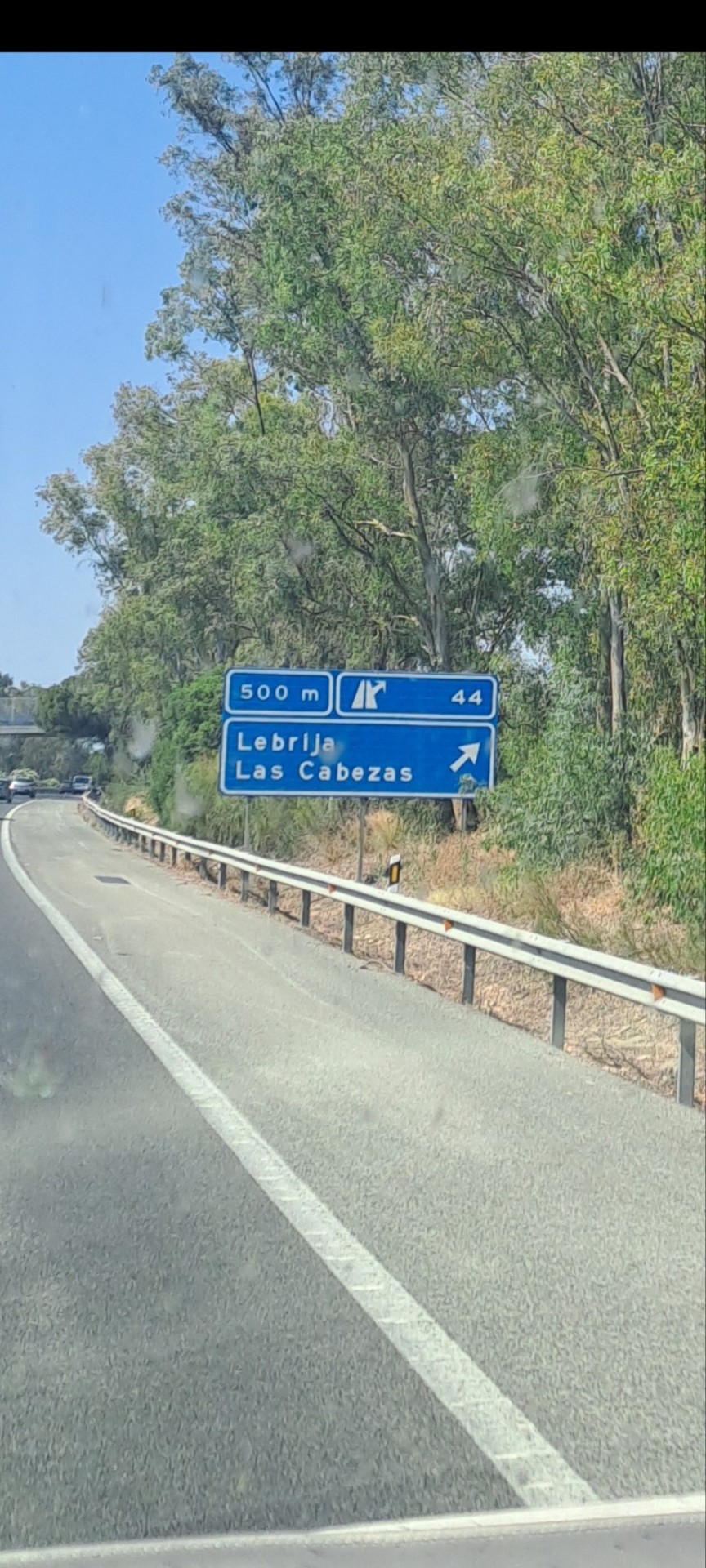




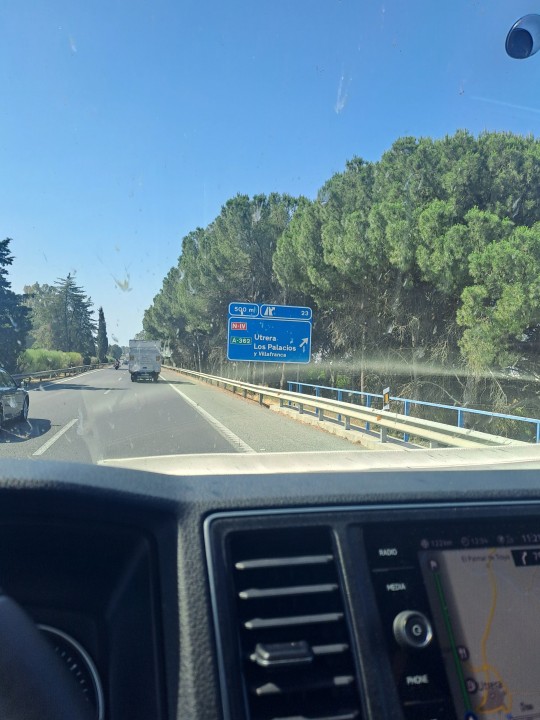




jeep renegade [alguien que renuncia a sus ideales creencias o fidelidades publicamente] pasando el puente del CENTENARIO DE SEVILLA con barrio HELIOPOLIS [CIUDAD DEL SOL] de fondo
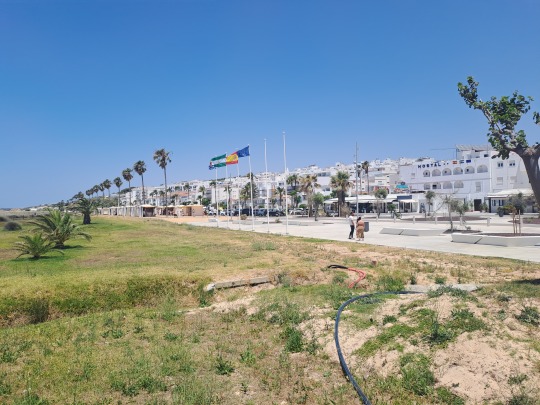
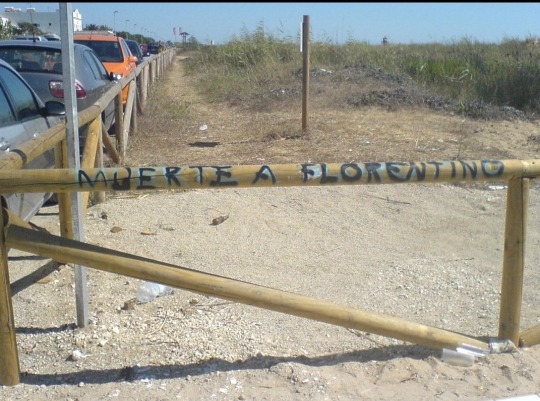

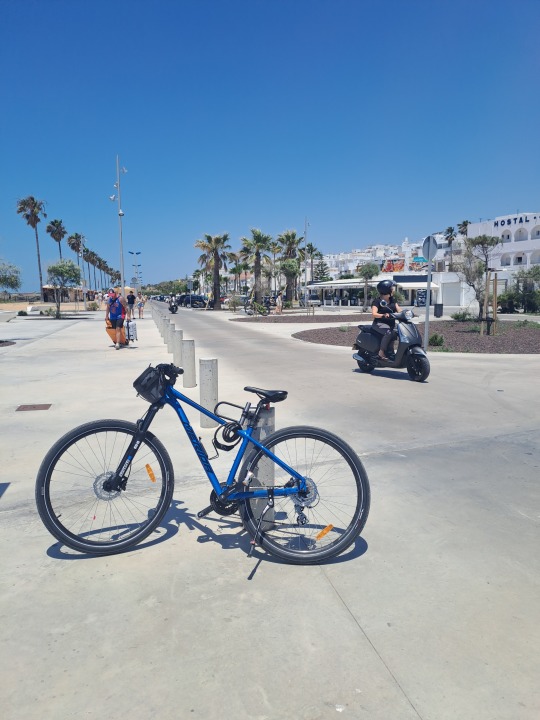
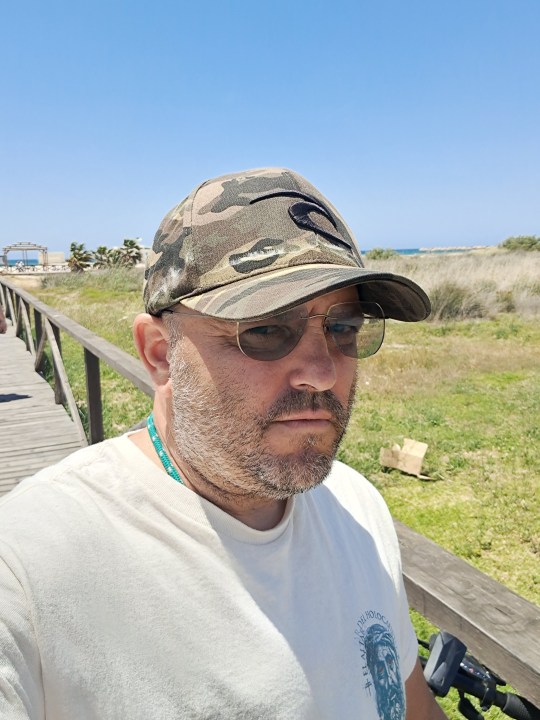

0 notes
Text
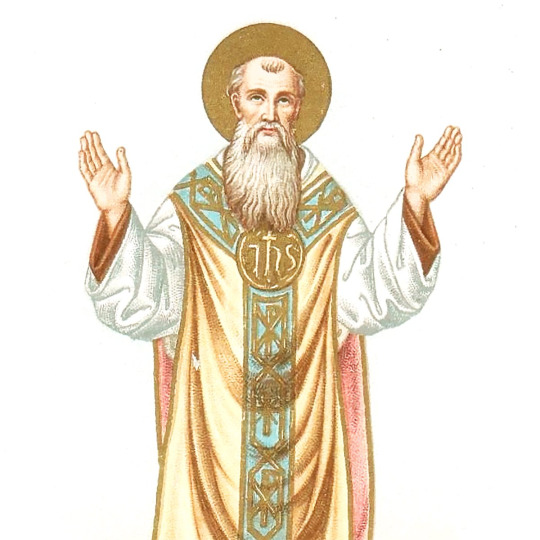
THE DESCRIPTION OF SAINT LAWRENCE OF BRINDISI Feast Day: July 21
"Nos cum prole pia, benedicat Virgo Maria." (Mary, with Her loving Son, bless us each and every one.)
One of the greatest preachers of the Order of Friars Minor Capuchin, Lawrence was born Giulio Cesare Russo, on the feast of St. Mary Magdalene - Brindisi, a city located in the Apulia region at Kingdom of Naples in the year 1559. Showing an early gift for oratory, he was always the one chosen to address, in accordance with the Italian custom, a short sermon to his compatriots on the Infant Jesus during the Christmas festivities. He is raised by a family of Venetian merchants. At the age of 16, he entered the Capuchin Franciscans in Venice, receiving the habit, and changed his name from Cesare to Lawrence.
An accomplished linguist, in addition to his native Italian, Lawrence could read and speak Latin, Hebrew, Greek, German, Bohemian, Spanish, and French fluently. While still a deacon he preached the Lenten sermons in Venice. After his ordination at the age of 23, he became famous throughout Europe as a forceful preacher. He also wrote many theological books and worked for the conversion of the Jews. Lawrence was elected superior of the Capuchin Franciscan province of Tuscany at the age of 31, and appointed definitor general in Rome for the Capuchins in 1596.
Pope Clement VIII assigned him the task of preaching to the Jews in the city. His knowledge of the Hebrew language was of great help in this regard. Beginning in 1599, Lawrence was sent to establish the Capuchin convents in modern Germany and Austria as a barrier agent in Lutheranism, furthering the Counter-Reformation and bringing many Protestants back to the Catholic faith. He also founded friaries in Vienna, Prague, and Graz.
On account of of his holiness, he was named the imperial chaplain of the Christian forces sent by Rudolph II (Rudolf II), Holy Roman Emperor, and successfully recruited Philippe Emmanuel, Duke of Mercœur, against the Ottoman Turks, who were threatening Hungary. Before the Siege of Székesfehérvár (Stuhlweissenburg) in 1601, though the Christians were outnumbered four to one, he gave a rousing address to the troops. Then he himself rode a horse before them, armed with the crucifix in his hand. The Turks were defeated and Europe was saved.
At their chapter of 1602, Lawrence was elected vicar general of the Capuchin friar, at that time the Order's highest office, whom he administered with energy and charity. Despite his fervent apostolate, Lawrence was a man of prayer and learning. He entered the service of the Holy See, becoming papal nuncio to Bavaria. After serving as nuncio to Spain, he retired to a monastery in 1618, and was recalled as a special envoy to the King of Spain regarding the actions of the Viceroy of Naples in 1619, and after finishing his mission, died in Lisbon, Portugal on July 22, 1619 - his 60th birthday.
Beatified by Pope Pius VI on June 1, 1783 and canonized a saint by Pope Leo XIII on the feast of the Immaculate Conception in 1881, Lawrence's remains were entombed at the Poor Clares' Convento de la Anunciada (Convent of the Annunciation) in Villafranca del Bierzo, Spain. Because of his creative yet orthodox writings on the Virgin Mary and for his commanding erudition in, and harmonious presentation of, Scripture, patristics, and fundamental theology, Pope St. John XXIII proclaimed him a Doctor of the Church in 1959.
Lawrence of Brindisi is the third Franciscan Doctor of the Church, along with Saints Bonaventure and Anthony of Padua, and, unfortunately, one of the least well-known.
1 note
·
View note
Text
Business of Art | Making it Work Outside of New York City
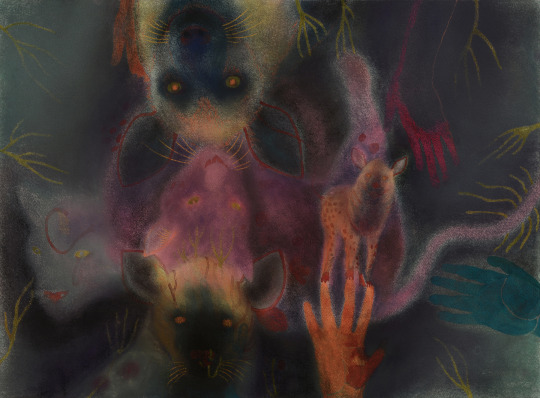
How to cultivate your creative practice and career where you live and beyond.
New York City has a wealth of resources for artists and creative consumers alike, yet there are also challenges associated with being a working artist here, including a high cost of living and limited opportunities for affordable workspace. As much as we love our city (New York Foundation for the Arts’ office is in Brooklyn, after all), for the purposes of this post, we’re focusing our lens outside of city limits to examine how you can best cultivate your creative practice and career.
Develop your goals as an artist.
We talked to three artists who have exhibited widely both within their local communities as well as internationally: Jan Harrison (Recharge Foundation Fellow ’19), who after living in Cincinnati for many years settled in Kingston, NY, two and a half hours away from Manhattan, and Kim Bishop (IAP Mentor ’19) and Luis Valderas (IAP Mentor ’19), who in addition to being artists, co-founded the 3rd Space Art Gallery in San Antonio, TX.
Bishop and Valderas emphasized that it is important for working artists to “have a clear vision of your goal as an artist, then be ready, and be professional.” Artist-centered professional development and entrepreneurial training programs can help you define your artistic vision as well as short and long term goals. In addition to reaching out to your regional or state arts councils for opportunities, several national organizations offer both in-person or remote learning options, including NYFA Learning and the nonprofit organization Creative Capital. Harrison also echoed the need for artists to be proactive about finding opportunities and cultivating their careers, “Find your own way; don’t just try and fit within an established art world. Be creative about how you are going to exhibit your work.”
Be involved in your local arts community.
As a working artist, be involved in your local arts community where you can find like-minded artists and creative professionals to share resources, exhibit work, and learn about new opportunities. Outside of New York City, arts communities tend to be smaller and tight-knit, yet they are often more accessible to new artists. Harrison suggested that artists “go to local openings and studio visits as much as possible, and find connections that aren’t necessarily in the arts, but that have shared passions.” As you discover artists and organizations nearby that you respect, sign up for their mailing lists, follow them on social media, and participate in their programming as much as possible.
“Be prepared to share your knowledge through mentorship or teaching because you have to show how art is valuable to your community,” emphasized Bishop and Valderas, “Be active in the development of art policy in your city.” Search Americans for the Arts’ Arts Service Directory to find your local arts agencies; Americans for the Arts also lists an advocacy toolkit for individuals and information about current legislation affecting the arts on their website.
Be part of the broader arts community, too.
Arts writers and collectors tend to be clustered around international arts centers, such as New York City and Los Angeles, so seek out opportunities to develop connections in those places while still living and being active in your local arts community. Stay up-to-date with industry-related news in your discipline, including reading local and international arts and culture publications and following artists you admire on social media. Develop a strong digital presence, including a website with professional-quality images of current work and previous projects, and maintain active social media accounts. Harrison explained that some of her exhibition opportunities in the United States and in Europe came from relationships that started through various forms of communication, including global environmental and animal activism, as well as social media. She also maintains many personal and professional relationships in New York City and beyond.
In addition to a strong digital presence, Bishop and Valderas recommended that artists develop relationships with academic institutions, join professional associations and participate in their conferences, and apply for residencies to make connections outside of their geographic region. They also advised that artists can “develop your network outside of the community by traveling as well as hosting.”
Find open calls online on NYFA’s Opportunities & Services page, NYFA Source, the Alliance for Artist Communities Residency Directory, and discipline-specific resources such as Common Field, Poets & Writers, and Theatre Communications Group. National visual, performing, and literary conferences that artists and industry professionals both attend include convenings by the Association of Performing Arts Professionals (APAP), Association of Writers and Writing Programs (AWP), and the College Art Association (CAA).
As an artist, find opportunities to channel your creative energy both within and outside your local arts community to raise your visibility, learn from peers and mentors, and build lasting relationships across the diverse populations of arts enthusiasts in this country and abroad. “Think locally, regionally, and globally,” said Harrison, “You can do all three.”
- Maria Villafranca, NYFA Coach
You can find more articles on arts career topics by visiting the Business of Art section of NYFA’s website. Sign up for NYFA News and receive artist resources and upcoming events straight to your inbox.
Image: Jan Harrison (Recharge Foundation Fellow ’19), FOUNDLING, 2015, Photo Credit: Nancy Donskoj
#business of art#businessofart#creativecareers#creative careers#nyfa learning#nyfalearning#mariavillafranca#maria villafranca#announcements#instagram#profdev#artist profdev#jan harrison#janharrison#luis valderas#luisvalderas#kim bishop#kimbishop
3 notes
·
View notes
Text


Eleanor of Toledo (11 January 1522 – 17 December 1562):
“Eleonora Álvarez di Toledo was the second duchess of Florence and married Cosimo I de’ Medici in 1539. She was born in Léon, Spain, and then moved to Naples in 1534, when her father, Don Pedro Álvarez de Toledo, Duke of Alba and Marquis of Villafranca, became Viceroy of Naples. Her mother, Maria Osorio Pimentel, was connected to the Spanish ruling household, and so Eleonora received a traditional Spanish upbringing. Eleonora had eleven children, including five sons, and contemporaries celebrated her fertility. The marriage between the ducal couple appeared to be a very happy one. Eleonora traveled with her husband frequently to their various palaces and villas across Tuscany, enjoying hunting, fishing, riding horses, and gambling. Apart from the production of children, Eleonora was a wealthy landowner who traded in commodities such as grain. The duchess acted as regent at least four times during her marriage, because of Cosimo I’s absence during war (1541, 1543) or illness (1544–1545). The longest period of Eleonora’s regency was between 1551 and 1554, while Cosimo I was away fighting the War of Siena. Eleonora was duchess of Siena from 1559 and together with her husband made a triumphal entry into Siena in 1560. Eleonora was a great patron of art, employing Agnolo Bronzino to decorate her private chapel and paint a series of portraits of her. (…) Eleonora was often ill with tuberculosis from the 1550s, and she died on 17 December 1562 after contracting a malarial fever along with two of her sons, Giovanni and Garzia, who both had died shortly before her.”
75 notes
·
View notes
Photo










Villa Valguarnera Villafranca a Bagheria, Villa Palagonia a Bagheria, Piazza San Domenico a Palermo, Statua di San Giovanni Nepomuceno, Tutte opere del domenicano Tommaso Maria Napoli (Palermo 1659 - Palermo 1725).
Nel mio precedente post su Novelli ti ho parlato di come prima del grande terremoto del 1689, già in Sicilia i pittori, i principi e baroni che creavano ed usavano l’arte, fossero molto attenti alle novità provenienti, tra una guerra e una pestilenza, dall’Italia. Dobbiamo notare come molti studiosi del Barocco siciliano, pur riconoscendo l’originalità delle opere, sottolineavano la loro similitudine con opere simili del nord Europa, dell’ Austria o Baviera. Può apparire strano questo accostamento anche se in effetti, all’inizio del 1700 la Sicilia era governata dal trono d’Austria. C’è però un filo rosso che legò a quel tempo la Sicilia architettonica a Roma e all’Austria della Middle Europe. Questo filo rosso fu il frate domenicano Tommaso Maria Napoli. Padre Tommaso, nato a Palermo da una famiglia di orafi, pur entrando in convento si dedicò agli studi di architettura e presto, nel 1688 fu a Roma per poi arrivare a Vienna e quindi ad occuparsi della ristrutturazione della cattedrale di Dubrovnik fino al 1711. La frequentazione di Vienna gli permise di entrare nelle grazie di Eugenio di Savoia, una personalità importantissima per l’Austria e la Spagna di quell’epoca. Eugenio, generale dell’esercito austriaco non era solo un brillante comandante, abituato a sconfiggere eserciti grandi il doppio del suo, ma era anche un esteta, un amante dell’arte e dell’architettura. Ad ogni battaglia vinta riceveva dei premi in denaro così grossi che si poteva permettere di comprare ville e castelli o ricche collezioni di libri. Padre Tommaso entrò nelle grazie dell’invincibile condottiero e quando tornò in Sicilia nel 1711, nessuno aveva una reputazione e delle conoscenze più grandi delle sue ed apparve chiaro che solo lui potesse essere l’Architetto del Regno. Per questo motivo i nobili più potenti delle Due Sicilie, come i Valguarnera-Villafranca e il principe di Palagonia Ferdinando Francesco I Gravina y Cruyllas, gli commissionarono le loro ville a Bagheria. Quest’ultime rappresentano il meglio della cultura architettonica dell’epoca con richiami a Bernini e alle grandi ville austriache, contenendo inoltre richiami alchimistici ed esoterici molto di modo tra la nobiltà dell’epoca. L’ultima opera di padre Tommaso fu la risistemazione di piazza San Domenico a Palermo e la realizzazione dell’unica statua di San Giovanni Nepumuceno esistente sull’isola. La statua del santo boemo San Giovanni Nepumuceno, alquanto inconsueto nel firmamento dei santi locali siciliani, fu commissionata dal capitano austriaco del Castello a Mare di Palermo, il conte Ottocaro di Starhenberg che probabilmente, non fidandosi della tranquillità del mare di fronte al castello, penso bene di far erigere la statua del suo compaesano San Giovanni Nepumuceno, che, come pochi sanno, è il protettore di chi sta per annegare. Più Middle Europe di cosi…
In my previous post on Novelli I told you about how, before the great earthquake of 1689, already in Sicily the painters, princes and barons who created and used art, were very attentive to the news coming, between a war and a plague, from Italy. We must note how many scholars of Sicilian Baroque, while recognizing the originality of the works, emphasized their similarity with similar works from northern Europe, Austria or Bavaria. This combination may seem strange even if in fact, at the beginning of the 1700s Sicily was ruled by the throne of Austria. However, there is a red thread that linked architectural Sicily to Rome and to the Middle Europe at that time. This red thread was the Dominican friar Tommaso Maria Napoli. Father Tommaso, born in Palermo tin a family of goldsmiths, while entering the convent he devoted himself to architectural studies and soon, in 1688 he was in Rome and then arrived in Vienna and then took care of the renovation of the Dubrovnik cathedral until 1711. His attendance in Vienna allowed him to enter into the good graces of Eugenio di Savoia, a very important personality for Austria and Spain at that time. Eugenio, general of the Austrian army, was not only a brilliant commander, used to defeating armies twice his size, but he was also an esthete, a lover of art and architecture. With every battle he won he received such large cash prizes that he could afford to buy villas and castles or rich collections of books. Father Thomas fell into the good graces of the invincible leader and when he returned to Sicily in 1711, no one had a reputation and knowledge greater than him and it became clear that only him could be the Architect of the Kingdom. For this reason the most powerful nobles of the Two Sicilies, such as the Valguarnera-Villafranca and the Prince of Palagonia Ferdinando Francesco I Gravina y Cruyllas, commissioned their villas in Bagheria from him. The latter represent the best of the architectural culture of the time with references to Bernini and the great Austrian villas, also containing alchemical and esoteric references very fashionable among the nobility of the time. Father Tommaso’s last work was the rearrangement of Piazza San Domenico in Palermo and the construction of the only statue of San Giovanni Nepumuceno existing on the island. The statue of the Bohemian saint San Giovanni Nepumuceno, quite unusual in the firmament of the Sicilian local saints, was commissioned by the Austrian captain of the Castle upon Sea in Palermo, Count Ottocaro di Starhenberg who probably, not trusting the tranquility of the sea in front of the castle, he think well to have the statue of his fellow countryman San Giovanni Nepumuceno, who, as few know, is the protector of those who are about to drown. More Middle Europe than this …
41 notes
·
View notes
Photo

Dona Maria Tomasa Palafox, Marquesa de Villafranca by Francisco de Goya, 1805.
20 notes
·
View notes
Text
Audio Gifts
Hey, everyone!
It’s the end of the year again so I’m gonna gift out my audio masters from this year in case anyone’s interested. There’s 7 audios under the cut!
You’re more than welcome to trade/gift these but if you do just list them as ���revolution-trade’s master.’ Oh, and don’t ever list them for sale. Thanks!
In The Heights I Australia I January 20, 2019 (Evening) I MP3 I Untracked Cast: Stevie Lopez (Usnavi), Olivia Vazquez (Vanessa), Joe Kalou (Benny), Luisa Scrofoni (Nina), Marty Alix (Sonny), Margi de Ferranti (Abuela Claudia), Monique Montez (Daniel), Libby Asciak (Carla), Alexander Palacio (Kevin), Ana Maria Belo (Camilla), Stephen Tannos (Graffiti Pete), Richard Valdez (Piragua Guy) Notes: Closing night of the shows four day run in Sydney. There were a few sound issues, but this cast is amazing. [link]
Charlie and the Chocolate Factory I Australia I January 24, 2019 (Matinee) I MP3 I Untracked [link] Cast: Xion Jarvis (Charlie Bucket), Paul Slade Smith (Willy Wonka), Tony Sheldon (Grandpa Joe), Lucy Maunder (Mrs. Bucket), Jake Fehily (Augustus Gloop), Octavia Barron Martin (Mrs. Gloop), Karina Russell (Veruca Salt), Stephen Anderson (Mr. Salt), Monette McKay (Violet Beauregard), Madison McKoy (Mr. Beauregard), Harrison Riley (Mike TeaVee), Jayde Westaby (Mrs. TeaVee) Charlie and the Chocolate Factory I Sydney, Australia I July 21, 2019 (Matinee) I MP3 I Tracked & Untracked Cast: Paul Slade Smith (Willy Wonka), Xion Jarvis (Charlie Bucket), Tony Sheldon (Grandpa Joe), Octavia Barron Martin (Mrs. Gloop), Jake Fehily (Augustus Gloop), Madison McKoy (Mr. Beauregarde), Jayme-Lee Hankeom (Violet Beauregarde), Stephan Anderson (Mr. Salt), Karina Russell (Veruca Salt), Jayde Westaby (Mrs. Teavee), Harrison Riley (Mike Teavee), Lucy Maunder (Mrs. Bucket), Danielle O’Malley (Grandma Josephine), Johanna Allen (Grandma Georgina), Kanen Breen (Grandpa George), Todd Goddard (Jerry/Ensemble), Madison Green (Cherry/Ensemble) Notes: Closing performance in Sydney. A bit of shuffling as there were people around me eating. During curtain call, all three Charlies were brought out for a final bow. [link] Billy Elliot I Sydney, Australia I October 10, 2019 I MP3 I Tracked & Untracked Cast: Wade Neilson (Billy Elliot), Kelley Abbey (Mrs. Wilkinson), Justin Smith (Dad), Vivien Davies (Grandma), Drew Livingston (Tony), Robert Grubb (George), Dean Vince (Mr. Braithwaite/Ensemble), Danielle Everett (Dead Mum/Ensemble), Aaron Smith (Older Billy/Ensemble), Mason Kidd (Michael), Ella Tebbutt (Debbie), Oscar Mulchay (Tall Boy) Notes: Opening night of the 10th Anniversary Australian production. Includes brief comments from the Associate Director, Simon Pollard. Act 1 is full but Act 2 starts at ‘Deep Into The Ground’ as my phone glitched and I missed the first number. [link] Chicago I Sydney, Australia I October 13, 2019 (Evening) I MP3 I Tracked & Untracked [link] Cast: Tom Burlinson (Billy Flynn), Natasha Bassingthwaighte (Roxie Hart), Alinta Chidzey (Velma Kelly), Casey Donovan (Matron ‘Mama’ Morton), Rodney Dobson (Amos Hart), J. Furtado (Mary Sunshine). Ensemble: Todd Dewberry, Mitchell Fistrovic, Andrew Cook, Samantha Dodemaide, Ben Gillespie, Chaska Halliday, Travis Kahn, Hayley Martin, Kristina McNamara, Joe Meldrum, Tom New, Jessica Vellucci, Romina Villafranca, Rachel Ward, Zachary Webster, Mitchell Woodcock, Amy Berrisford. School of Rock I Sydney, Australia I November 13, 2019 (Evening) I MP3 I Tracked & Untracked [link] Cast: Brent Hill (Dewey Flynn), Amy Lehpamer (Rosalie Mullins), John O’Hara (Ned), Nadia Komazec (Patty), Thea Sholl (Freddy), Brendan Rutledge (Zack), Samantha Zhang (Katie), Tobi Clark (Lawrence), Nakita Clarke (Summer), Jacob Drew (Billy), Ezekiel Sciacca (Mason), Julien Daher (James), Jenna Keenan (Shonelle), Lucy de Hosson (Marcy), Anja O’Connor (u/s Tomika) Billy Elliot I Sydney, Australia I November 20, 2019 (Matinee) I MP3 I Tracked & Untracked Cast: Omar Abiad (Billy), Lisa Sontag (u/s Mrs. Wilkinson), Justin Smith (Dad), Vivien Davis (Grandma), Drew Livingston (Tony), Robert Grubb (George), James Sonnemann (Michael), Gabrielle Dagger (Debbie), Mason Kidd (Tall Boy), Danielle Everett (Dead Mum), Aaron Smith (Older Billy) Notes: The scenes in Act 1 are a little quiet, but they’re clearer in Act 2 because I adjusted my phone. Billy dropped his chair during Swan Lake and you can hear it thump, but Omar recovered quickly. [link]
Here’s to more theatre in 2020!!
#audio gifts#audio gift#bootleg gift#in the heights#charlie and the chocolate factory#billy elliot#chicago#school of rock#school of rock musical#charlie and the chocolate factory musical#i did this last year as well but i only went to two musicals last year so this is ... an improvement lmao#jess rants about life
22 notes
·
View notes
Text
Sanchez vs. Court of Appeals
FACTS:
The sole child of Juan Sanchez and Maria Villafranca is Rosalia Lugod. Her father had the petitioners, who are now adults. Rosalia requested letters of administration for her mother and father's inheritance after Maria Villafranca passed away. Juan Sanchez passed away before the proceedings could come to an end. Rosalia objected to a petition for letters of administration of Sanchez's assets brought by his illegitimate offspring.
With the aid of their attorneys, Rosalia and the father's illegitimate children signed a compromise agreement on October 30, 1969, in which they agreed to divide the possessions. Four drafts later, they finally did. On January 19, 1970, however, petitioners demanded that Rosalia deliver a shortfall of 24 hectares or toss the settlement agreement. They argued that the arrangement was unlawful since the court had not given its blessing. Later, the parties signed a memorandum of understanding on April 13, 1970.
ISSUE:
Was the compromise agreement valid even without the approval of the court?
HELD:
Yes. According to Article 2028 of the Civil Code, a compromise agreement is a contract whereby the parties agree to mutual concessions in order to avoid litigation or finish one that has already been started. It is a consensual contract, therefore it is complete upon the parties' convergence of thought. Judicial approval is not required for this. Given that the contract was signed only after four drafts, the parties must have entered into it consciously. When they learned the compromise deal contained mistakes, they even engaged into a memorandum of agreement that revised it. This demonstrates unequivocally that they agreed to the deal voluntarily.
0 notes
Text
Seca: Agricultores do Sul queixam-se que ainda não tiveram acesso a ajudas por animal
O presidente da ACOS -- Associação de Agricultores do Sul, Rui Garrido, criticou hoje o Governo por os produtores pecuários ainda não terem tido acesso às anunciadas ajudas por animal, devido à seca, com 2022 quase no fim.

Na sessão oficial de abertura de um congresso luso-espanhol em Cáceres, na região da Estremadura (Espanha), Rui Garrido aludiu à seca e considerou “manifestamente insuficiente [o] pacote de ajudas por animal” preparado pelo Estado português.
E, além disso, esse apoio “peca por tardio, uma vez que estamos no final do ano de 2022 e os agricultores ainda não tiveram acesso a esta anunciada ajuda”, criticou, sem mencionar diretamente o Ministério da Agricultura, tutelado por Maria do Céu Antunes.
Na sua intervenção no arranque oficial do III Congresso Luso-Espanhol de Pecuária Extensiva e Desenvolvimento Rural, de caráter bienal e que nesta edição tem como tema “Sustentabilidade Garantida”, Rui Garrido lembrou que o evento, que decorre hoje e na sexta-feira, acontece num contexto internacional difícil.
“Em plena guerra na Europa, após uma pandemia e ainda com a seca bem presente em vastas regiões do sul da Península Ibérica”, que “continuam a provocar grandes estrangulamentos ao desenvolvimento da agropecuária, fruto dos aumentos brutais dos fatores de produção”, vincou.
Para o presidente da ACOS, sediada em Beja, “é fundamental e urgente que as políticas nacionais e comunitárias reflitam a defesa do mundo rural”.
Para tal, “é fundamental desfazer tabus, mal-entendidos, desinformação, lobbies”, até porque a pecuária extensiva, em que o gado pasta em herdades povoadas de montado (azinheiras e sobreiros), um complexo ecossistema agrossilvopastoril, “é uma das práticas agrárias mais antigas da humanidade”, frisou.
“É um dos mais relevantes exemplos de bem-estar animal, com o pastoreio dos animais ao ar livre” e “contribui para a mitigação das alterações climáticas, uma vez que é um contribuinte fundamental para a fixação de carbono do solo e, consequentemente, para a biodiversidade”, destacou.
Rui Garrido disse ainda que, “através das suas atividades a montante e a jusante, tem um papel fundamental para o combate ao despovoamento e à desertificação”.
Face às alterações climáticas e secas recorrentes, o dirigente português considerou “vital” a construção de “um sistema hidrológico de dimensão ibérica”.
Na mesma sessão de abertura, Ángel Villafranca Lara, presidente das Cooperativas Agroalimentares de Espanha, também aludiu ao “menosprezo” com que é tratada a pecuária extensiva por parte de setores da sociedade e da política, quando, afinal, concentra “sustentabilidade”.
“Há uma palavra de moda que praticamente todos utilizamos: sustentabilidade. Desde os automóveis até empresas que nada têm a ver com o meio ambiente falam que são sustentáveis. Pois bem, há sustentabilidade no território” com pecuária extensiva, disse.
“Mas é preciso começar pelas pessoas” e “há que fazer rentável a sustentabilidade”, porque esta “não pode ser uma entidade abstrata” para se “visitar pontualmente aos fins de semana”, sustentou o responsável espanhol.
O congresso em Cáceres, que conta com cerca de 450 participantes espanhóis e cerca de 150 portugueses, é coorganizado pela ACOS, União dos Agrupamentos de Defesa Sanitária do Alentejo, Cooperativas Agroalimentares de Espanha e Federação dos Agrupamentos de Defesa Sanitária Ganadeira (FADSG).
0 notes
Photo

8th November >> (@VaticanNews) #PopeFrancis promulgates 16 decrees concerning the miracles, martyrdom and heroic virtues of 24 persons on their way to sainthood.
Pope Francis authorizes decrees on the causes of saintsPope Francis met Cardinal Angelo Becciu, Prefect of the Congregation for the Causes of Saints on November 7, and authorized the promulgation of 16 decrees concerning 24 persons.
Pope Francis on Wednesday authorized the Congregation for the Causes of Saints to promulgate a special decree on the heroic virtues and the confirmation of the cult from time immemorial of the Servant of God Michael Giedrojć, regarding him as Blessed. This act of the Pope declaring a person Blessed without the need for a beatification ceremony is called “equipollent” beatification, or “equivalent” beatification. Michael Giedrojć, a professed layman of the Order of St. Augustine, was born in Giedrojce (Lithuania) around the year 1420 and died in Krakow (Poland) on May 4, 1485.
The Pope also authorized 15 other decrees regarding miracles, martyrdom and heroic virtues of 23 people, bringing them a step closer to sainthood.
They include 9 men and 6 women, 11 of them martyrs. Two decrees are on miracles attributed to the intercession of two Italian laywomen, clearing them for beatification. Three decrees are on martyrdom and 10 on heroic virtues.
Below is the complete list of decrees:
Miracles
A miracle has been attributed to the intercession of the Italian Venerable Servant of God Edvige Carboni, a laywoman. She was born in Pozzomaggiore (Italy) on 2 May 1880 and died in Rome on 17 February 1952
A miracle has been attributed to the intercession of the Italian Venerable Servant of God Benedetta Bianchi Porro, a laywoman. She was born in Dovadola (Italy) on 8 August 1936 and died in Sirmione del Garda (Italy) on 23 January 1964
Martyrdom
The martyrdom of the Spanish Servants of God Angelo Cuartas Cristóbal and his 8 companions. The students of the Seminary of Oviedo were killed in hatred of the faith in Oviedo (Spain) between 1934 and 1937 during the Spanish civil war.
The martyrdom of the Spanish Servant of God Mariano Mullerat i Soldevila, a layman and father of a family. He was born in Santa Coloma de Queralt (Spain) on 24 March 1897 and was killed in hatred of the faith at El Pla, near Arbeca (Spain) on 13 August 1936
The martyrdom of American Servant of God James Alfred Miller, a professed Brother of the Institute of the Brothers of the Christian Schools. He was born in Stevens Point (USA) on September 21, 1944, and was killed in hatred of the faith in Huehuetenango (Guatemala) on February 13, 1982
Heroic virtues
The heroic virtues of the Italian Servant of God Giovanni Jacono, titular Archbishop of Mocisso and former Bishop of Caltanissetta. Born in Ragusa (Italy) on March 14, 1873, he died there on May 25, 1957
The heroic virtues of Filipino Servant of God Alfredo Maria Obviar, the first Bishop of Lucena and Founder of the Congregation of Missionary Catechists of Saint Teresa of the Child Jesus (sisters). He was born in Lipa (Philippines) on 29 August 1889 and died in Lucena (Philippines) on 1 October 1978
The heroic virtues of Italian Servant of God Giovanni Ciresola, a diocesan priest who founded the Congregation of the Poor Handmaids of the Precious Blood - Cenacle of Charity. He was born in Quaderni di Villafranca (Italy) on May 30, 1902, and died in Quinto di Valpantena (Italy) on April 13, 1987
The heroic virtues of Italian Servant of God Luigi Bosio, a diocesan priest. He was born inAvesa (Italy) on April 10, 1909, and died in Verona (Italy) on January 27, 1994
The heroic virtues of Italian Servant of God Luigi Maria Raineri, a professed cleric of the Congregation of Clerics Regular of Saint Paul, or the Barnabites. He was born in Turin (Italy) on 19 November 1895 and died in Crespano (Italy) on 24 November 1918
The heroic virtues of the Ecuadorian Servant of God Raffaella of the Passion (born Raffaella Veintemilla Villacís), foundress of the Congregation of the Augustinian Daughters of the Most Holy Saviour. She was born in Quito (Ecuador) on March 22, 1836, and died in Lima (Peru) on November 25, 1918
The heroic virtues of Spanish Servant of God Maria Antonia of Jesus (born Maria Antonia Pereira y Andrade), a professed nun of the Order of Discalced Carmelites. She was born in El Penedo (Spain) on October 5, 1700, and died in Santiago de Compostela (Spain) on March 10, 1760
The heroic virtues of Spanish Servant of God Arcangela Badosa Cuatrecasas, a professed religious of the Congregation of the Sisters of the Blessed Virgin Mary of Mount Carmel. She was born in Sant Joan les Fonts (Spain) on 16 June 1878 and died in Elda (Spain) on 27 November 1918
The heroic virtues of Italian Servant of God Maria Addolorata del Sacro Costato (born Maria Luciani), a professed religious of the Congregation of the Sisters of the Passion of Jesus Christ. She was born in Montegranaro (Italy) on 2 May 1920 and died in Teramo (Italy) on 23 July 1954
The heroic virtues of the Italian Servant of God Lodovico Coccapani, a layman of the Secular Franciscan Order. Born in Calcinaia (Italy) on 23 June 1849, he died there on 14 November 1931
Topics
DICASTERY
POPE FRANCIS
AUDIENCES
ANGELO BECCIU
SAINTS AND BLESSED
08 November 2018, 13:49
4 notes
·
View notes
Text
ARTICLE 6
#6 BALICDANG, MILDRED
Rights may be waived, unless the waiver is contrary to law, public order, public
policy, morals, or good customs or prejudicial to a third person with a right
recognized by law. (4a)
Waiver Defined
It is the relinquishment or refusal of a known right with both knowledge of its
existence and an intention to relinquish it.
When there is a waiver.
In practice, it is required of everyone to take advantage of his rights at a proper
time; and neglecting to do so will be considered as a waiver. Thus, failure of
counsel, either in brief or oral argument, to allude to an assignment of error, is a
waiver thereof.
In contracts, if after knowledge of a supposed fraud, surprise, or mis- take, a
party performs the agreement in part, he will be considered as having waived the
objection.
The right of the accused to a preliminary investigation is a personal one and may
be waived, expressly or by implication. The right of the accused to be present at
certain stages of the proceedings may be waived; so also may his right to the
assistance of counsel.
Scope of waiver.
The right of waiver while extending to almost all descriptions of contractual,
statutory, and constitutional privileges is nevertheless subject to control of public
policy, which cannot be contravened by any conduct or agreement of the parties.
Waiver distinguished from ratification.
Waiver is the renunciation of some rule which invalidates the contract, but which,
having been introduced, for the benefit of the contracting party, may be
dispensed with at his pleasure while ratification is the adoption of a contract
made on one’s behalf by someone whom he did not authorize, which relates
back to the execution of the contract and renders it obligatory from the outset.
Note: Thus, if a minor enters into a contract, the same can be ratified by the
parents or guardians. Such act of the parents or guardians shall cleanse the
contract of its defect from the commencement of the contract of the minor. (Art.
1396, NCC).
General rule and exceptions on waiver of rights.
The general rule is that rights may be waived. But this rule is not absolute. It
admits of two exceptions, such as:
a) When the waiver is contrary to law, public order, public policy, morals, good
customs; and
b) When the waiver is prejudicial to a third person with a right recognized by law.
Future inheritance and political rights cannot be waived, for it is contrary to law.
Case digest.
Sanchez, et al. v. Ca, et., G.R. No. 108947
Facts:
◦ The petitioners are the illegitimate heirs of Juan C. Sanchez while the respondent
Rosalia S. Lugod is the legitimate child of sps. Juan Sanchez and Maria
Villafranca Sanchez (Sps Sanchez), and the other respondents are the children
of Rosalia S. Lugod.
◦ When Juan C. Sanchez died a petition for intestate proceedings was filed by the
petitioners, but they later entered into a compromise agreement with the
respondents to settle their respective inheritance in the estate of Juan C.
Sanchez.
◦ In the said compromise, the petitioners waive their hereditary right to properties
belonging to the decedent’s estate which were not included in the inventory of
the estate’s properties and the properties originally belonging to Sps Sanchez
which have been transferred to other persons.
Issue:
◦ Whether or not the waver is valid.
Ruling:
◦ The waiver is valid because the parties waived a known and existing interest-
their hereditary right which was already vested in them by reason of the death of
their father It is valid even if the extent of such share is not determined until the
subsequent liquidation of the estate What is void is waiver of future inheritance.
Article 7
#7 GARCIA, HILDA
Article 7. Laws are repealed only by subsequent ones, and their violation or non-observance shall not be excused b disuse, or custom or practice to the contrary.
When the court declares a law to be inconsistent with the Constitution, the former shall be void and the latter shall govern.
Administrative or executive acts, orders and regulations shall be valid only when they are not contrary to the laws or the Constitution (5a)
Preliminary Consideration
First paragraph-Gives the supremacy to the Constitution over an ordinary law or legislation .
Second and third paragraph- Asserts the supremacy of the law and the Constitution over administrative or executive acts.
Report of the Code Commission, p. 78
“Though this is undisputed theory, it is wise to formulate it as a clear-cut legal provision by way of a constant reminder to not a few public officials. The disregard of this principle is one of the main sources of abuse of power by administrative officials.”
Repealing Acts
The repeal of a statute shall not affect or impair any act done, right vested, duly imposed, penalty accrued or proceeding commenced before the taking effect of the repealing act.
Kinds of Repeal
1. Express-when it is contained in the subsequent act.
2. Implied- when the subsequent law is inconsistent with the former.
Case Digest:
G.R. No. L-19628 December 4, 1922
LICHAUCO & COMPANY, INC., petitioner, vs. SILVERIO APOSTOL, as Director of Agriculture, and RAFAEL CORPUS, as Secretary of Agriculture and Natural Resources, respondents.
STREET, J.
Facts
Petitioner, a corporation duly organized under the Phil. laws, engaged for several years in the business of importing carabao and other draft animals, and was desirous of importing, from Pnom-Pehn, a shipment of draft cattle and bovine cattle for the manufacture of serum. However, respondent Director of Agriculture refused to admit said cattle except upon condition that drafts be immunized. Petitioner however contends that the respondent has no authority over the matter, invoking section 1762 of the Administrative Code, as amended by Act No. 3052. On the other hand, relying upon section 1770 of the Administrative Code, Admin. Order No. 21 of the Bureau of Agriculture, and Dept. Order No. 6 of the Secretary of Agriculture and Natural Resources, respondent maintained its decision. Hence, the issue.
Issue
Whether or not section 1770 (and other similar acts) has been repealed by implication by Act 3052 and hence cannot be applied with the case at bar?
Ruling
The decision of the Court is No. The Court ruled that the contention of the petitioner is untenable for the reason that the invoked section 1762, as amended, is obviously of a general nature while 1770 is a particular one. Section 1770 is therefore not inconsistent with section 1762 and instead be considered a special qualification of the latter provision. Moreover, the court emphasized that “specific legislation upon a particular subject is not affected by a general law upon a same subject unless it clearly appears that the provision of the two laws are so repugnant. The special act and the general law must stand together, the one as the law of the particular subject and the other as the general law of the land.” Therefore, Section 1770 of the Administrative Code remains in effect and serves as a supplementary provision to section 1762, as amended.
Summary of Article 7
1.Laws are repealed by subsequent ones. Congress cannot make a law that can NEVER be repealed.
2.When an express REPEAL is repealed, there is no revival- except when the repealing law provides.
3. When an IMPLIED repeal is repealed, there is automatic revival - except when the repealing law provides otherwise.
4. The Constitution is the Supreme law of the land.
5. An unconstitutional law is a VOID LAW and the exception is the Doctrine of Operative Fact.
#repeal
Article 8.
# LIZARONDO, GIDIEZEL
Judicial decisions applying and interpreting the laws or the Constitution shall form a part of the legal system of the Philippines.
Contemporaneous interpretations – of laws form part of the law as of the time of their enactment. They assume the authority as the statutes themselves. They are what the laws mean.
The principle of contemporaneous construction of a statutes by the executive officers of the government, whose duty is to execute it, is entitled to great respect.
Administrative interpretation of laws – Administrative regulations adopted under a legislative authority by a particular department must be in harmony with the law and should be for the sole purpose of carrying into effect its general provision.
Intention of law is formed in its spirit – The study of law is not an exact science with definite fields of black and white and unbending rules and rigid dogmas. The beauty of this discipline is the “penumbra” shading gradually from one extreme to another that gives rise to those honest differences of opinion among the brotherhood as to its correct interpretation.
Legislative Intent is important – It must also be stated that in the interpretation of a statute, legislative intent must be ascertained from a consideration of the statute as a whole.
Whenever the Supreme lays down a principle, it becomes part of the law forming part of the contemporaneous interpretation of the law as of the time of its enactment.
Kinds of Interpretation:
Ø CLOSE – Interpretation is adopted is just reasons connected with the character and formation of the text induce us to take the words in their narrowest meaning. This species of interpretation also generally called “literal”.
Ø EXTENSIVE – Interpretation called also “liberal” interpretation, adopts a more comprehensive signification of the words.
Ø EXTRAVAGANT – Interpretation is that which substitute a meaning evidently beyond the true one. It is therefore not genuine interpretation.
Ø FREE – Or unrestricted, interpretation proceeds simply in the general principles of interpretation in good faith, not bound by any specific or superior principle.
Ø LIMITED – Or restricted, interpretation is when we are influenced by other principles than the strictly hermeneutic ones.
Ø PREDESTINED – Interpretation takes place if the interpreter, labouring under a strong bias of mind, makes the text subservient to his preconceived views or desires.
Interpretation – the office of the judiciary – As between the three departments of government, the office of construing and interpreting the written laws belongs to the judiciary ultimately, although the executive and legislative departments may be required, by necessity, to put their own construction upon the laws in advance of their exposition by the courts.
Decision or judgement defined – A judgement is the law’s last word in the judicial controversy. It is the conclusion of the law upon the matters contained in the record, or the application of the law to the pleadings and to the facts, as they appear from the evidence in the cases and as found by the court, admitted by the parties or as deemed to exist upon their default in a course of judicial proceedings.
Presumption against injustice – It is presumed that the Congress never intends to do injustice. Rather it is presumed that it shall do right and give justice.
FLORESCA VS. PHILEX MINING
G.R. NO. L-30642 APRIL 30, 1985
MACASIAR, J.:
FACTS:
Petitioners are the heirs of the deceased employees of Philex Mining Corporation (hereinafter referred to as Philex), who, while working at its copper mines underground operations at Tuba, Benguet on June 28,1967, died as a result of the cave-in that buried them in the runnels... of the mine. Specifically, the complaint alleges that Philex, in violation of government rules and regulations, negligently and deliberately failed to take the required precautions for the protection of the lives of its men working underground.
The defendant PHILEX, with gross and reckless negligence and imprudence and deliberate failure to take the required precautions for the due protection of the lives of its men working underground at the time, and in utter... violation of the laws and the rules and regulations duly promulgated by the Government pursuant thereto, allowed great amount of water and mud to accumulate in an open pit area at the mine above Block 43-S-l which seeped through and saturated the 600 ft. column of broken ore and... rock below it, thereby exerting tremendous pressure on the working spaces at its 4300 level, with the result that, on the said date, at about 4 o'clock in the afternoon, with the collapse of all underground supports due to such enormous pressure, approximately 500,000 cubic feet... of broken ores, rocks, mud and water, accompanied by surface boulders, blasted through the runnels and flowed out and filled in, in a matter of approximately five (5) minutes, the underground workings, ripped timber supports and carried off materials; machines and equipment which blocked all avenues of exit, thereby trapping within its tunnels all of its men above referred to, including those named in the next preceding paragraph represented by the plaintiffs herein;
That out of the 48 mine workers who were then working at defendant PHILEX's mine on the said date, five (5) were able to escape from the terrifying holocaust; 22 were rescued within the next 7 days; and the rest, 21 in number, were left mercilessly to their fate, notwithstanding the fact that up to then, a great many of them were still alive, entombed in the tunnels of the mine, but were not rescued due to defendant PHELEX's decision to abandon rescue operations, in utter disregard of its bounden legal and moral duties in the premises;
ISSUE:
Does CFI (RTC) have jurisdiction over the complaint?
RULING:
Yes. Under the law, Floresca et al could only do either one. If they filed for benefits under the WCA then they will be estopped from proceeding with a civil case before the regular courts. Conversely, if they sued before the civil courts then they would also be estopped from claiming benefits under the WCA.
Pursuant to Article 8 of the Civil Code, it argues that the application or interpretation placed by the Court upon a law is part of the law as of the date of the enactment of the said law since the Court’s application or interpretation merely establishes the contemporaneous legislative intent that the construed law purports to carry into effect. Yet, the Court argues that the Court can legislate, pursuant to Article 9 of the New Civil Code. However, even the legislator himself recognizes that in certain instances, the court “do and must legislate” to fill in the gaps in the law; because the mind of the legislator, like all human beings, is finite and therefore cannot envisage all possible cases to which the law may apply. (HOWEVER, the Supreme Court ruled that Floresca et al are excused from this deficiency due to ignorance of the fact. Had they been aware of such then they may have not availed of such a remedy. But, if in case they’ll win in the lower court whatever award may be granted, the amount given to them under the WCA should be deducted. The Supreme Court emphasized that if they would go strictly by the book in this case then the purpose of the law may be defeated. Idolatrous reverence for the letter of the law sacrifices the human being. The spirit of the law insures man’s survival and ennobles him)
Article 9.
#9 VILLAMIL, JOHN KERBY
No judge or court shall decline to render judgement by reason of the silence, obscurity or insufficiency of the laws.
A judge should not refrain from rendering a judgement just because there is no law that governs a particular case. In the absence however of a law, the customs, and traditions of the place can be applied, but they must be proved as facts according to the rules of evidence. The rule however is inapplicable to criminal cases, for if there is no law that penalizes an act, the same is not punishable under the maxim nullum crimen nulla poena sine lege. Even if the law is obscure, it can still be applied and the rules of statutory construction can aid the court.
How about if the law is unjust? The rule is dura lex sed lex. It is the duty of the court to apply it and not tamper with it. The court cannot adopt a policy different from that of the law. What the law grants, the court cannot deny. But if the law is unjust or harsh the court may apply a soft hand in recommending executive clemency to an accused who was convicted. But it cannot refrain from applying the law. If the court tampers with the law and refuses to apply the policy it laid down, then, it is usurping the power of the congress in declaring what the law is. In essence, it would be violating the principle of separation of power.
Chu Jan, plaintiff, appellee, vs. Lucio Bernas, defendant, appellant.
G. R. No. L-10010 August 1, 1916
Facts:
On the afternoon of June 26, 1913, a match was held in the cockpit of the municipality of Tabaco, Albay, between two cocks belonging to the plaintiff and to the defendant respectively. Each of said persons had put up a wager of P160; and as the referee of the cockpit had declared the defendant's cock the winner in the bout, the plaintiff brought suit against the defendant in the justice of the peace court of the said pueblo, asking that his own rooster be declared the winner. The justice of the peace court decided that the bout was a draw. From this judgment the defendant appealed to the Court of First Instance of the province.
The defendant denied each and all of the allegations of the complaint and moved to dismiss with the costs against the plaintiff. On September 11, 1913, the said Court of First Instance rendered judgment dismissing the appeal without special finding as to costs. The defendant excepted to this judgment as well as to an order dictated by the same court on November 8th of the same year, on the plaintiff's motion, ordering the provincial treasurer of Albay and, if necessary, the municipal treasurer of Tabaco of the same province, to release the deposit of P160 and return it to its owner, the plaintiff Chinaman, Chu Jan. These proceedings have come before us on appeal by means of the proper bill of exceptions.
Issue:
Whether the dismissal of the case on grounds of not knowing the rules governing cock fighting and not knowing what laws should be applied in the particular case is justifiable.
Held:
No. The ignorance of the court or his lack of knowledge regarding the law applicable to a case submitted to him for decision, the fact that the court does not know the rules applicable to a certain matter that is the subject of an appeal which must be decided by him and his not knowing where to find the law relative to the case, are not reasons that can serve to excuse the court for terminating the proceedings by dismissing them without deciding the issues. Such an excuse is the less acceptable because, foreseeing that a case might arise to which no law would be exactly applicable, the Civil Code, in the second paragraph of article 6, provides that the customs of the place shall be observed, and, in the absence thereof, the general principles of law.
Article 10 of the Civil Code (page 50)
#10 MAHAGUAY, JERWIN
G.R. No. 112170 April 10, 1996
CESARIO URSUA, petitioner, vs. COURT OF APPEALS AND PEOPLE OF THE PHILIPPINES, respondents.
BELLOSILLO, J.:p
Facts.
Cesario Ursua was asked by his lawyer Atty Palmores to get the copy of the complaint against him on the Ombudsman’s office since the messenger, Mr. Oscar Cruz was not around
Before entering the office of the Ombudsman Mr. Ursua signed the name Oscar Cruz on the logbook.
Upon receiving the letter he used also Oscar Cruz.
While going out he encountered Ms. Amparo and recognized him as Cesario Ursua.
5. Ursua was charged with the R.A. No. 6085, otherwise known as "An Act to Regulate the Use of Aliases".
Issue: Whether or not RA no. 6085 otherwise known as "An Act to Regulate the Use of Aliases" was applicable to Mr. Ursua
Decision: No, RA no. 6085 is not applicable to the case of Ursua. The questioned decision of the Court of Appeals affirming that of the Regional Trial Court of Davao City is REVERSED and SET ASIDE and petitioner CESARIO URSUA is ACQUITTED of the crime charged.
Reason:
1. C.A. No. 142 - was made primarily to curb the common practice among the Chinese of adopting scores of different names and aliases which created tremendous confusion in the field of trade.
2. The confusion and fraud in business transactions that the anti-alias law and its related statutes seek to prevent are not present here as the circumstances are peculiar and distinct from those contemplated by the legislature in enacting C.A. No. 142 as amended.
0 notes
Photo

Inaugurazione della mostra “L’altra metà dell’avanguardia 1910-1940”, Palazzo Reale, Milano 1980; in piedi da sinistra: Achille Castiglioni, Grazia Varisco, Vittoria Alliata di Villafranca, Pierre Rouve e Elisabetta Fermani; sedute: Dora Vallier e Lea Vergine - Ph. Maria Mulas
0 notes
Text
Register Now | How to Find and Land Your Dream Job in the Arts!

This February 18 workshop will help you define your career path, find opportunities, and walk you through all stages of a job search.
New York Foundation for the Arts (NYFA) is pleased to announce its next online workshop "How to Find and Land Your Dream Job in the Arts," presented by Maria Villafranca, NYFA Coach and Consultant, on Tuesday, February 18, 2020 from 6:30 PM - 8:00 PM. Our first Spring 2020 workshop is part of our Online Learning Initiative that provides professional development workshops to artists and creatives nationally and internationally through a webinar platform.
Workshop Description:
Are you passionate about the arts and looking for a career where you can contribute to a vibrant cultural sector? Whether you are an entry-level job-seeker or an experienced manager who is interested in a career transition, this workshop will help you define your career path, find opportunities, and walk you through all stages of a job search, from applying to interviewing to negotiating an offer. We’ll discuss arts-specific resources covering a range of disciplines, common application missteps, and how to strategically network in the field. You’ll walk away with a clearer sense of how to frame your career for new opportunities and essential strategies to land your dream job in the arts.
Geared toward arts and culture employees at all career stages, this workshop will give you tips on topics such as:
Defining your dream job: We’ll discuss a range of career options in the visual, literary, and performing arts, and key questions to consider in tailoring your search.
Where to find opportunities/networking: In addition to an overview of arts-specific employment resources, we’ll talk about informational interviews, staying informed about the field, and networking.
Application strategies: We’ll define tips for creating and adapting your cover letter and resume for each application, including common missteps!
Interviews: We’ll review how to prepare for an interview, how to respond to challenging questions, and key questions that you should ask potential employers.
What Comes Next: Finally, we’ll talk about job offers, how to negotiate salary, and how to build lasting relationships in the field.
Title: How to Find and Land Your Dream Job in the Arts! Date: Tuesday, February 18, 2020, 6:30 PM - 8:00 PM* Location: Anymeeting Webinar Platform, online and anywhere you have Internet access Program Fee: $25 Registration: Please register for the program here. Questions: Email [email protected]
*This workshop will be recorded and shared with all previously-registered participants after the session concludes. It will be available for viewing up to 6 months after the workshop date.
Presenter Maria Villafranca is a nonprofit management consultant with over fifteen years of experience in leadership roles at NYC-based arts organizations. She specializes in helping creatives manage career transitions and/or navigate acute issues such as asking for a raise or handling employee conflict. She has presented on nonprofit management, creative careers, and cultural resources at organizations across the country. She has also held positions, primarily in leadership roles, at The Andy Warhol Foundation for the Visual Arts, New York Foundation for the Arts (NYFA), Pace Gallery, Marbella Gallery, and the Dactyl Foundation for the Arts & Humanities. She has a BA degree in Art History and English from Rutgers University and an MFA degree in Fiction from Brooklyn College. She currently lives in Philadelphia.
Want a preview of what to expect during Villafranca’s “How to Find and Land Your Dream Job in the Arts!" online workshop? Read Villafranca’s blog post on the “How, Why, and When to Negotiate Salary.”
Our 2020 Spring workshop series highlights NYFA Coaching, a professional development service that offers access to one-on-one individual guidance from a variety of arts professionals, including NYFA staff. Our online workshop series and NYFA Coaching are part of NYFA Learning, which includes professional development for artists and arts administrators. Sign up for NYFA’s free bi-weekly newsletter to receive updates on future programs.
Image: Courtesy NYFA Learning
#online learning#onlinelearning#nyfa learning#nyfalearning#creative careers#creativecareers#maria villafranca#mariavilllafranca#announcements#professional development#profdev#professionaldevelopment#jobsinthearts#jobs in the arts#instagram
2 notes
·
View notes